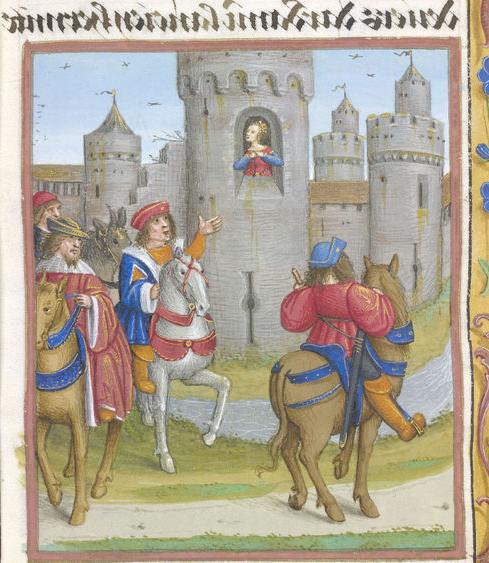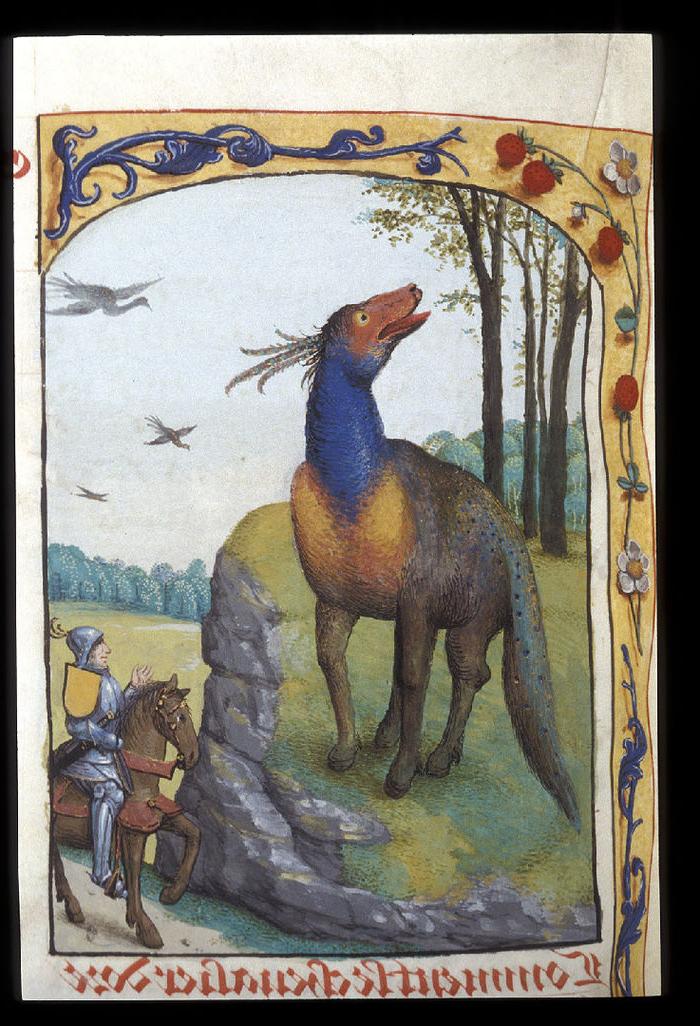
Knights on horseback reaching a castle, from the medieval French narrative text Perceforest. A new approach to reading the text suggests that gender identity 600 years ago was just as complex as it is today, 十大网投平台信誉排行榜的一名研究人员说.
宾州大学公园. — Gender and gender identity may seem like more recent headline-grabbing topics, 但是社会已经讨论了几个世纪了. A new approach to reading a medieval French narrative text suggests that gender identity 600 years ago was just as complex as it is today, 十大网投平台信誉排行榜的一名研究人员说.
“性别多样性并不是一个新概念,布鲁克·芬德利说, 法语和妇女学副教授, 在十大网投平台信誉排行榜阿尔图纳分校进行性别和性研究, 谁是这项研究的作者?. “对性别不同于生理性别的理解, 而且它并不总是很容易融入二进制, has been with us throughout human history across diverse cultures and time periods. And gender looks different than we would expect at different times in history. We have to approach medieval texts keeping in mind that our current assumptions about gender won’t necessarily hold true in that context.”
目前的研究发表在 中世纪女权主义论坛:性别与性杂志, Findley examined 钢铁之心, a character in the 15th century French romance “Perceforest.” The work’s use of both masculine and feminine pronouns to refer to the character, and the difficulties that 钢铁之心 encounters when trying to explain their gender to others, suggest that the character may be best understood as not easily fitting into a male-female gender binary. The character’s struggle to define their gender and have it be accepted by others resembles challenges faced by the LGBTQ+ community today, 据芬德利说.
“Especially right now, when we’re seeing a lot of anti-trans legislation in the U.S., I think there’s sometimes the assumption that being trans is something new, 或者这只是一种时尚,芬德利说. 事实上,跨性别者和非二元性别者在历史上一直存在. 一旦你开始寻找,故事无处不在.”
Medieval scholars use the term “romance” to describe a secular narrative written in the common language and meant for popular consumption, Findley解释. 虽然是用法语创作的, 很可能在今天的勃艮第地区, the six-book-long romance “Perceforest” draws on Celtic myth and takes place in pre-Arthurian Britain.
在芬德利研究的那部分浪漫故事中, 钢铁之心 is first introduced as a courtly maiden named Neronés who falls in love with the Golden Knight. But the lovers are separated when Neronés is abducted by her jealous fiancé and physically assaulted by his sister. 在假死以逃避折磨之后, neronsamus经历了一次象征性的重生, 把他们的皮肤染成更深的颜色, 当时, was considered a masculine trait — and adopts the persona of 钢铁之心. The character eventually becomes the squire of the Golden Knight, who does not recognize them. 钢铁之心, 似乎不愿意回到他们作为尼龙萨斯的身份, 努力向他们的前任解释他们是谁. The couple eventually meets the Fairy Queen, who forces 钢铁之心 to resume living as a woman.
Findley, 之前把《信誉最好的大网投平台》描写成一个异装癖的女人, re-examined the text for the current study without assuming that the character is a woman.
“This is a good example of needing to get away from assumptions about gender,芬德利说. “我以为这个角色是个女人, 但现在, 仔细看看经文到底在告诉我们什么, 我想我那样做是错的.”
研究人员指出,在角色变成钢铁之心之后, 这部浪漫小说同时使用“他”和“她”代词来指代主人公, 有时在同一个句子中同时使用这两个词.
芬德利说:“法语是一门非常性别化的语言. “你到处都能看到性别标记, 不仅在代词中,而且在形容词和某些动词形式中. 当你仔细看这篇文章时, 你会发现这是刻意的, “钢之心”的系统代词组合. This is something that ‘Perceforest’ doesn’t do for any of its other characters, and it’s also something that seems to be unusual in other texts from the time. 当钢铁之心和他们的爱人金骑士在一起, 这里的代词混合比其他场景更多. It begs the question: are we playing with the possibility of a queer love interest?”
Just as complex as the pronoun mixing are the character’s attempts to explain their own identity, 指出Findley. The character first tries describing their identity to the Golden Knight in a series of dream narratives in which 钢铁之心 appears as both a man and a woman. 晚些时候, 当仙女女王问他们是男是女时, 钢铁之心 refuses to answer but instead asks the queen to “listen to [their] story” and recounts their history in a long, 配乐的叙事诗.
“What 钢铁之心 seems to be expressing is the idea that gender is a story, 不是简单的,而是隐喻性的,复杂的, 也许没人会理解,芬德利说. “女王, 另一方面, is an enforcer of gender norms and forces a gender identity onto 钢铁之心 by making them dress as a woman.”
在强迫钢铁之心扮成女人之后不久, the queen sends the Golden Knight off on more adventures without 钢铁之心, 说Findley.
“The romance leaves us wondering how the lovers feel about the queen defining 钢铁之心’s gender,芬德利说. “Even though the gender ‘order’ is restored by the queen at the end of the story, the implication is that this isn’t what either 钢铁之心 or the Golden Knight would have wanted. 这不是一个快乐的结局. The story shows us that people trying to control or limit gender 多样性, 或者对性别认同的不同表达感到害怕, 并不是当前所独有的. By studying historical sources without assumptions we are able to see what people in the past thought about gender 多样性, and that gender has always been stranger and more complicated than we’ve been led to believe.”





